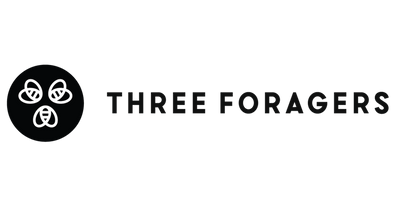

· By Three Foragers
Is Your Honey Really Honey?
Our bees work hard to create delicious raw honey.
From spring to late fall, they are out collecting the nectar of wildflowers, alfalfa, and sweet clover to turn into wonderful raw and creamed honey. With the help of the drones, the queen lays thousands of eggs while the workers harvest nectar, build honeycomb, store honey, and protect the hive from intruders.
Our honey farm takes only what the bees can spare to ensure the health of our colonies. It’s a busy life in and around a beehive!
With all the tough work that the bees put in, it’s unfortunate that honey is the third most fraudulent food item in the world.
This may surprise you: the honey you’re buying from your local grocery store might not be pure honey. Additives were found in 23 percent of honey samples tested by the Canadian Food Inspection Agency over the 2017-18 fiscal year. While the honey is still safe to consume, people are paying high prices for a falsely labelled product.
Why Is Honey Fraud So Prevalent?
Worldwide demand for honey is increasing. We think this is great news! Raw honey is a sustainable food source and bees help pollinate a variety of fruits and vegetables. But some honey packagers have taken advantage of this rising demand by adding inexpensive fillers to their honey to increase the volume of their production.
How Honey Is Faked
Different types of sugary syrups can be used to adulterate honey. In the past, corn or cane sugar syrup were popular additives. Advances in product quality tests have forced counterfeit honey processors to find alternative filler ingredients. Now, the most commonly used additive is rice syrup, which is harder to detect.
China is a significant source of adulterated honey. The situation became so severe that China is no longer permitted to export honey directly to Canada. But Chinese honey is still finding its way onto supermarket shelves through a process called transshipment, where the honey is first sent to an intermediary country and relabelled as a product of that country.
The paperwork is then faked to change the country of origin and allow the honey to be “legally” imported into North America.
Identifying Honey Origin
To identify where honey was made, labs run a pollen analysis. With this test, you can find out the honey’s botanical and geographic origins. If you filter the pollen, by say pasteurization, you cannot find out where the honey is coming from.
Catching Fake Honey
Honey producers and testing agencies are locked in an endless game of cat-and-mouse. Every time a new test is developed to detect a new form of adulteration, the producers will change their manufacturing processes.
Right now, the best way to test for additives in honey is nuclear magnetic resonance. This process uses a magnetic pulse to analyze the individual atoms of a honey sample. Syrup atoms will reflect the pulses differently than honey atoms.
Only a few people in North America have access to this technology. So while it is possible to detect when honey has been adulterated, there will undoubtedly be products that go untested and slip through the very wide cracks.
How To Purchase Real Honey
All this testing and investigating makes our heads spin!
The simplest way to purchase pure honey is to look for companies that actually have bees and produce the honey themselves! It sounds simple, but there are many many companies in Canada that are not honey farmers (yet claim they are) themselves so at times, may prove difficult for them to speak to the quality and source of the honey that is being packaged. Buying honey directly from beekeepers and beekeeping companies that both produce the honey and package it are your best bet to having yourself a jar of real honey. This is something our little honey farm really takes pride in and other small beekeeping companies across Canada.
Throwing additives into honey is silly. Bees make amazing honey. We keep it that way.
